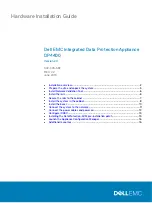
ICP-S Technical Manual
Overcurrent Protection Elements
Rev.A
1/13
ICP-S Technical Manual
ICP-S
1. Overview
The ICP-S is an IC protector of surface mounting type developed as an element for the protection of ICs from output
short-circuiting damage. The internal resistance of this lightweight, compact overcurrent protection element is low, as long
as the steady-state current of the element does not exceed the rated DC or AC current. The ICP-S, however, turns off ICs
instantly if the steady-state current reaches or exceeds the breaking current of the ICP-S.
2. External Dimensions (Unit: mm)
4.0
±
0.1
2.8
±
0.2
φ
1.15
±
0.1
8.0
±
0.2
5.3
±
0.2
3.5
±
0.05
(Mark: TN)
0~0.5
2.3
±
0.2
3.5
±
0.2
2.0
±
0.05
1.75
±
0.1
4.0
±
0.1
0.4
±
0.1
0~0.1
1.8
±
0.1
0.6
1.0
3.2
±
0.2
2.0
±
0.1
1.55
±
0.1
2.5
±
0.1
3.0
±
0.1
+
0.1
−
0
φ
1.5
TN direction
3. Features
1) Instantly breaks currents with a low potential drop.
(See 3-1 Potential Drop Comparison)
2) Compact surface-mounting model.
(See 2. External Dimensions)
3) Unlike fuses, there is no steady-state current reduction with the rated current applied. No derating is necessary.
4) Minimal breaking point dispersion.
(See the graph in 3-2 Breaking Current Dispersion
Characteristics)
5) Excellent temperature characteristics
(See the graphs in 3-3 Temperature Characteristics)
• The fluctuation of the breaking current caused by temperature changes is minimal.
• Wide operating temperature range:
−
55
°
C to
+
125
°
C
6) Excellent vibration resistance.
7) UL-approved product with certification No. 107856.
8) No deterioration or circuit breaking caused by static electricity.






























